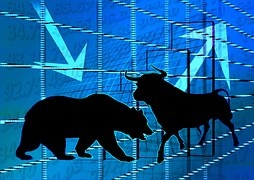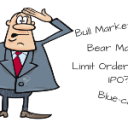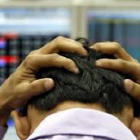
(A reflective view on interpreting other market participants' actions.)
To recap fellow weary investors, the market has turned. Two of the three steps are completed. The next step is the bear market getting into full swing.
Investors' future returns will depend on their own personal journey of financial trading and being able to control their own state of mind in volatile markets. Let's guide you step by step into the near future!
Step 1
This is where investors continue to hold their portfolio of shares believing in their value proposition. The bigger the company market capitalisation value, the more comfortable investors are to hold on. Sliding share prices do not concern them. They will bounce up again shortly. They always do!
Step 2
Post the recent market turbulence, opportunities abound. Investors may buy even more shares at knock down prices of companies not previously held. They self-congratulate themselves on how clever they are!
Next, the same investors average down on a few more of their favourite stocks, because they know better than the market! The market continues to slide more consistently and makes new lows. Any rallies to the upside fizzle out in quick time.
The first two steps are almost completed. You are fully loaded up with stocks. The last Bull investor has bought. Now is time for the Bear to emerge from the shadows.
Step 3
This final step may well be shortly upon us. This is where investors begin to hesitate to press the buy button, in the face of the stubbornness of the market to substantiate their bullish thesis.
Big institutions, as reported in the media are selling large blocks of stock. Institutions and hedge funds as a precautionary measure need to get liquidity for possible fund redemptions. Private investors will be assured by informed market commentators that the market is going through a healthy re-adjustment. No concerns here!
Some small companies will give short-term comfort to investors by the share prices holding up or even slightly increasing. The vast majority however, of small companies' share prices, slide in the absence of buyers. Market makers further protect themselves with wide spreads and quoting in smaller lot sizes. Big markdowns on a few thousand shares becomes common.
Even the best of the small companies in our portfolio will succumb and inevitably disappoint,…











